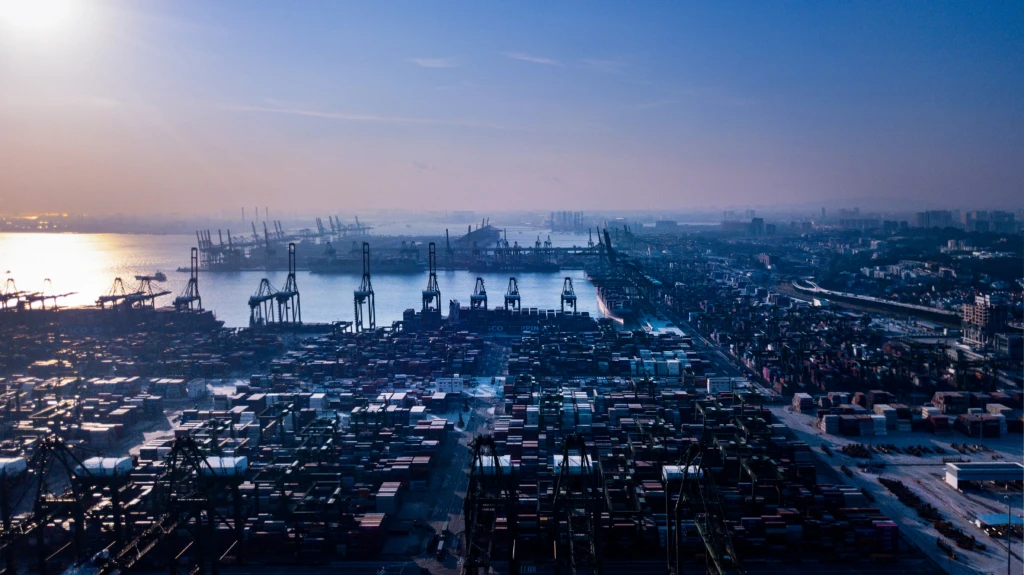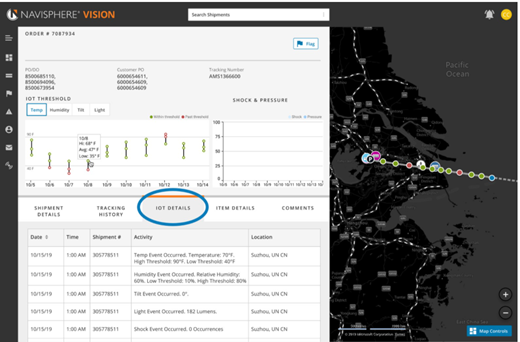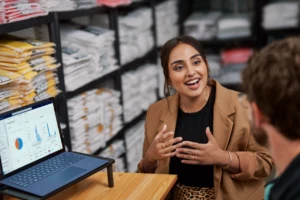
How IoT tracking in retail supply chains drives ROI
The return on investment (ROI) story behind internet of things (IoT) tracking in retail supply chains is compelling—especially for shipments with a high inventory value, cold chains, or when on-time delivery is critical. With specialized IoT sensors, retailers can keep tabs on location and other valuable information like temperature, humidity, and vibration. This real-time insight enables organizations to take corrective action immediately when a supply chain disruption occurs. Potential savings can run into the millions annually. I spoke with Microsoft Azure IoT partners Footmarks, Cognizant, Verizon, and C.H. Robinson to get insights into the specific business returns that their customers are seeing.
Learn more about using Azure IoT in logistics and delivering intelligent supply chains.

Optimizing retail merchandising programs
E. & J. Gallo Winery is the world’s largest producer of wine. One way the organization maintains its lead is with an effective merchandising strategy that keeps its brands front-and-center to the consumer. Gallo is leveraging Footmarks’ IoT solution in their supply chains to optimize their merchandising strategy.
Previously, Gallo was only able to track the number of displays it produced and how many left their manufacturers for retail destinations. In 2020, they decided to test Footmarks SmartTrack cloud solution to gain visibility into the journey of each individual display from creation to distribution, and finally, to the store floor. The SmartTrack IoT solution would enable Gallo to accurately measure the ROI of its display campaigns by detecting the percent of displays that made it to their final in-store destination versus remaining in distribution partners’ warehouses.
Gallo and Footmarks designed a pilot project for Gallo’s popular Apothic brand and a display designed for a Halloween promotion. Footmarks worked with Gallo to deploy its innovative beacon solutions to enable tracking and monitoring. For this test, Gallo also implemented the IoT solution in warehouses of its distribution partner, SGWS. This gave Gallo visibility into the movement of displays through its partner’s warehouses and visibility of SGWS’s sell-through of the Apothic displays into test markets.
At the time of production, a Bluetooth beacon sensor with unique identifiers was installed on each individual display. Gateways were then registered in Azure IoT Central and placed in both Gallo and SGWS warehouses to provide supply, inventory, and sell-through details in real-time.
This display lifecycle information proved invaluable to Gallo’s marketing team. During execution, Gallo used these insights to provide live updates to sales teams, enabling them to ensure that displays were at the right stores, at the right time, and for the duration of the promotion period. Through the Footmarks SmartTrack dashboard, Gallo was alerted when displays arrived and were removed from the store floor. Armed with this new merchandising execution data, Gallo could measure the lift of the promotion for Apothic in the stores for which the display executed.
“Historically we have not had visibility into our merchandising execution. Through Footmark’s IoT solution we have solved that issue which will allow us to produce and measure in ways that were previously not possible.” Jason Dukhi, Operations Lead, E. & J. Gallo Winery.
“With consumer behavior shifting and consumers increasingly cooking and consuming at home, Footmarks SmartTrack solution has become a must have for market leaders such as Gallo. We are thrilled to be working with Gallo to scale SmartTrack in 2021 and beyond.” Shawn Eglund, CEO, Footmarks.
Modernizing cold chain management
A large retail chain attributed nearly $2 billion in losses to food waste. Of that, refrigeration system failures or issues accounted for roughly $300 million. The legacy refrigeration controllers generated too many false alarms and there was no mechanism in place to predict failures. Microsoft partner Cognizant worked with the retailer to build out a solution that suppressed false alarms. The solution also provided more contextual information to technicians in the event of any failures, drastically reducing the downtime and ultimately reducing food loss by $18 million in one year.
In the process of working with the retailer, Cognizant envisioned the design of a new IoT application to keep food and temperature-sensitive medicines such as COVID-19 vaccines safe across touchpoints in the supply chain ecosystem. The company built out its OneTrack solution using Azure IoT Central and the Verizon ThingSpace IoT platform to address this use case.
“The global pandemic has disrupted nearly every supply chain. Connected IoT solutions are more essential than ever to protect all of us,” Rajiv Mukherjee, North American Practice Director of Cognizant’s IoT Retail and Consumer Goods business.
“Maintaining supply chain integrity is top of mind for retailers, especially in the current climate we are in today. Our ability to connect assets on a turnkey basis with the Verizon ThingSpace Cloud Connector for Microsoft Azure IoT Central provides businesses with the visibility and traceability into their goods wherever they may be” Shamik Basu, Verizon head of Thingspace.
Managing complex supply chains at scale
To keep up with global demand, millions of Microsoft Xbox consoles and Surface devices are manufactured and shipped across the globe every year. Getting these products into customers’ hands involves a very complex supply chain ecosystem. Microsoft leverages a diverse set of partners, including contract manufacturers, distribution centers, logistics providers, and carriers.
The Microsoft Surface and Xbox supply chain teams engaged with C.H. Robinson to develop a real-time IoT tracking solution. The goal was to acquire real-time visibility into the status of Surface and Xbox shipments. Visibility was especially critical around holidays or during new product launches.
C.H. Robinson, a global technology and logistics management provider, used its visibility product Navisphere® Vision to design a transformative solution that could be deployed globally. Working with Microsoft, C.H. Robinson leveraged Azure IoT Central. The goal was to track and monitor shipments’ ambient conditions for shock, light, and temperature to identify any damage in real-time, anywhere in the world—at a scale covering millions of products.
The initial results were impactful. Live visibility into shipments—across countries, multiple modes of transportation, and multiple carriers—gave the Xbox and Surface staff a new level of confidence. C.H. Robinson has since expanded its solution for other customers.
“Gaming consoles, produce, and medical supplies all have very different handling requirements,” explained Chris Cutshaw, Director of Commercial & Product Strategy, C.H. Robinson. “We’ve worked with Microsoft and Intel to add IoT monitoring to our Navisphere Vision solution so clients can customize sensor measurement thresholds for each type of shipment. They can receive alerts if thresholds are reached so they can mitigate damage or delays.”

Summary
We have seen how the ROI of implementing IoT tracking within retail supply chains rises dramatically when shipments contain high-value items, require cold chains, or must be delivered on time. E & J Gallo Winery gained new visibility into its merchandising program’s execution enabling it to assess the ROI on its sales program. A large global retail chain saved $18 million in food losses annually by implementing a new IoT tracking system in its refrigeration units. Microsoft business units gained new confidence in shipment safety and schedules of high-value products during holidays and new product launches.
Learn more about using Azure IoT in logistics and delivering intelligent supply chains.




